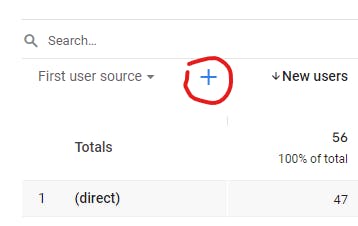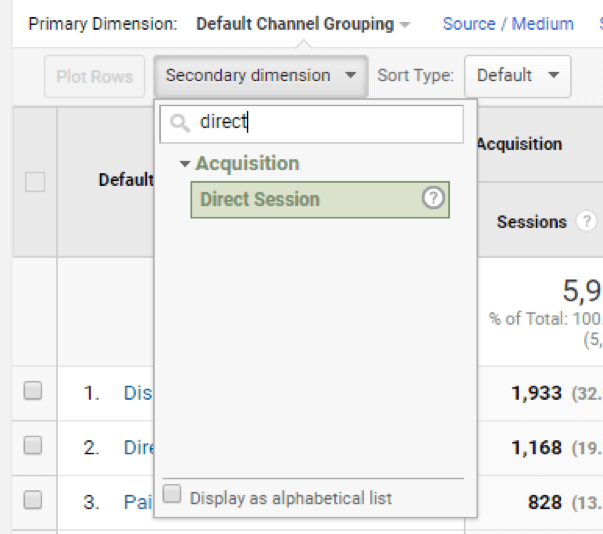Enhance Your Information Evaluation Utilizing Secondary Measurement in Google Analytics
Discovering the capacities of second measurements in Google Analytics opens a realm of opportunities for refining information analysis. The capability to explore details better past the surface degree presents a nuanced view that can shape strategic decisions. By layering additional dimensions onto key information collections, a more detailed narrative arises, clarifying individual communications and performance indicators. This dynamic technique to information assessment holds the essential to opening covert patterns and fads that might transform just how services analyze their electronic footprint.
Understanding Second Dimensions
Second measurements in Google Analytics refer to additional parameters that can be added to the key measurement, allowing for an extra in-depth analysis of data (Secondary Dimension in Google Analytics). By integrating additional dimensions, analysts can segment and filter information to reveal patterns, patterns, and connections that may not be evident when looking at the information as a whole.

Advantages of Utilizing Additional Dimensions
When analyzing information in Google Analytics, the use of secondary dimensions provides vital understandings right into user actions and performance metrics. By adding a secondary measurement to your key information, you can delve much deeper into the characteristics of your website visitors and their interactions. Among the essential benefits of utilizing secondary measurements is the capacity to segment and compare information much more effectively. This division permits you to understand just how different variables, such as demographics or web traffic resources, impact individual actions and conversions (Secondary Dimension in Google Analytics).
Moreover, second measurements assist in recognizing patterns and correlations that might not be promptly apparent when checking out the data in isolation. This much deeper level of analysis can reveal useful information that can direct marketing approaches, web site optimization, and overall business decisions. Furthermore, additional dimensions enhance the context of your primary information, giving a more thorough sight of customer involvement and efficiency metrics. On the whole, using secondary dimensions in Google Analytics can considerably enhance the deepness and top quality of your information evaluation, resulting in even more educated decision-making and improved end results.
Just How to Include Second Measurements
By integrating secondary measurements in Google Analytics, individuals can get much deeper understandings right into their information analysis process, enabling even more comprehensive assessment of user actions and performance metrics. Including secondary dimensions is a straightforward process that can considerably boost the deepness of evaluation. To add a second dimension in Google Analytics, beginning by browsing to the report you wish to evaluate. When in the record, locate the "Secondary dimension" tab over the data table. Click on it to disclose a dropdown menu with various alternatives such as Habits, Modern Technology, and Customized Dimensions. Select the measurement you wish to add, such as 'Source/Medium' or 'Gadget Category'. This second dimension will certainly after that be put on your existing data, giving extra context and enabling a much more comprehensive evaluation of user communications. By utilizing additional measurements successfully, individuals can reveal useful insights that might have otherwise been forgotten, causing informed decision-making and boosted efficiency methods.
Analyzing Information With Second Dimensions
Utilizing second measurements in information analysis offers a much more detailed understanding of customer behavior and performance metrics. By adding an additional measurement to your main information embeded in Google Analytics, you can delve much deeper right into the attributes of your website visitors and their interactions. Combining the main measurement of 'source/medium' with the secondary measurement of 'landing web page' can expose which particular web pages are drawing in traffic from various sources, helping you maximize these web pages for far better interaction.

Fundamentally, evaluating data with secondary dimensions empowers you to gain valuable insights right into individual habits, Homepage determine trends, and make educated choices to enhance the performance of your digital residential or commercial properties.
Best Practices for Secondary Dimensions
In information evaluation, integrating additional measurements effectively can dramatically boost the depth of insights stemmed from metrics and customer habits patterns. When utilizing additional measurements in Google Analytics or any kind of other logical tool, it is critical to comply with finest techniques to make sure the accuracy and importance of the data evaluation.
One key ideal method is to meticulously choose secondary measurements that complement the key measurement being examined. Picking secondary dimensions that supply additional context or additional division can provide an extra extensive understanding of the information. It is additionally vital to prevent overcomplicating the evaluation by including way too many additional measurements, which may lead to complication or dilution of insights.
Furthermore, it is a good idea to trying out different mixes of secondary and main measurements to uncover brand-new correlations and patterns. On a regular basis evaluating and fine-tuning the selection of additional measurements based on the particular objectives of the analysis can bring about even more actionable understandings. By following these ideal practices, information experts can take advantage of additional measurements successfully to improve the general information analysis process and decision-making capabilities.

Verdict
In final thought, incorporating second measurements in Google Analytics is necessary for an extensive data analysis method. By leveraging secondary dimensions alongside key ones, experts and marketing experts can discover useful insights and correlations that can inform decision-making and maximize electronic advertising methods. Comprehending how to successfully use additional measurements and following ideal practices will enable experts to remove purposeful information and boost my link their overall efficiency metrics.
Secondary dimensions in Google Analytics refer to extra specifications that can be added to the main dimension, enabling for an extra in-depth evaluation of information. By incorporating additional measurements, analysts can segment and filter information to discover patterns, trends, and relationships that could not be evident when looking at the data as a whole. Integrating the primary measurement of 'source/medium' with the additional dimension of 'touchdown page' can reveal which specific web pages are attracting website traffic from different sources, assisting you maximize these web pages for better interaction.
One trick finest technique is to thoroughly select secondary dimensions that enhance the main dimension being assessed. By check my reference complying with these ideal practices, data experts can leverage additional measurements efficiently to boost the overall data evaluation process and decision-making abilities.